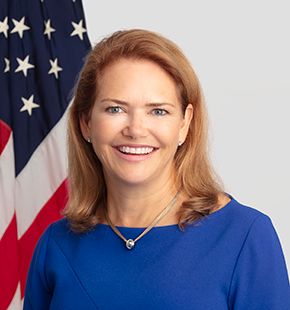Making the Transition from Oncologist to Principal Deputy Commissioner/Acting CIO of FDA
Dr. Amy P. Abernethy talks about her career moves from academia to industry to the US Food & Drug Administation.
Michael Wong speaks to Dr. Amy P. Abernethy about making the transition from oncologist to the Agency’s Principal Deputy Commissioner/Acting CIO of FDA.
Michael Wong: While some of my friends have moved from academia to industry, like you did as a Professor at Duke University to a C-Suite role at Flatiron Health, why did you join FDA and what were the key steps to make this transition?
Amy Abernethy: While my career has evolved across settings, my core focus has not changed: how do we improve the care of the patient sitting in front of me, especially by learning from all data available to make decisions that are tailored to her unique needs and health situation. As an academic physician at Duke, I was focused on how do we leverage data and technology to simultaneously conduct clinical trials and observational research — improving efficiency and supporting patient-centered treatment. At Flatiron, I focused on motivating the VC and health tech industries to help solve this same challenge. FDA was a logical next step. Public health and policy set the agenda, and laws and regulations set the guardrails. I continue to be motivated by the same problem — improving the care of patients as quickly as possible; the FDA is a great place to work in order to make impact at scale.
Dr. Amy P. Abernethy

The key steps important to my transition can best be summarized by “luck comes to the prepared.” The position of Principal Deputy Commissioner of FDA more or less found me, but I don’t call it simple serendipity. First, I worked to always demonstrate that I could perform and excel in any role — regardless of career setting. Second, I have deliberately blended many different areas of focus with deep-dive subject matter expertise when needed, so that I can be both fox and hedgehog. Third, I have built a large network of contacts and mentors, who provide sage advice and creative leads. Fourth, and probably most importantly, I am consistent in my own personal mission and vision, so when new opportunities arise, I can vet them against my goals.
With all the spare time that you had during your training to become an oncologist,1 I guess you decided to study information technology on the side so that you could eventually become a CIO as well? All kidding aside, how do you manage to stay on top of two sectors that are arguably the most complex and ever-changing fields of study?
Fascinating question. The answer builds on from the career preparatory steps that I just described. As you signal, I am both the Principal Deputy Commissioner at FDA and the Acting CIO. I am essentially managing two vastly different terrains simultaneously. First of all, it only makes sense for me to take on both roles if it advances my personal career mission — the patient in front of me. In this case, modernizing FDA’s data and technology agenda is critical to scaling the agency at a time when we are preparing for an onslaught of novel therapies (e.g., cell and gene therapies) and learning how to use data in new ways (e.g., combining clinical trials and real-world data). Solving these problems are squarely in line with my mission. Second, be a fox and a hedgehog. I drill in when I need to, but otherwise I work to understand the landscape and hire exceptional talent. In order to conserve personal energy, I look for synergies between the two domains and focus my study there in order to give me the credibility to talk to experts in both of the areas; for example, I am considered a cancer data expert — that helps. Overall, my job is to set the vision and motivate incredible partners to join in the solution.
With accelerating new technologies being deployed across the healthcare ecosystem, what is the secret sauce for leaders to strategically deploy them across their organizations?
The answer is primarily in your use of the word strategic. First, there are many technology solutions looking for problems. We start first with problems that need solving and then asking what technologies can help solve that problem? Second, the cloud makes the adoption of technology so much faster and cheaper. Using the cloud, we employ the philosophy of “fail fast and fail cheap” to validate if we have the right technology solution. Finally, it’s all about culture and having the right people. You need people who can think different and innovatively. You cannot use old thinking to make new technology work optimally. New stuff requires new perspectives and thinking and having people who can adapt and think in a modern way is absolutely essential. I see too many tech leaders use modern new technology but apply and scale it the same way they knew how to do a decade or more ago. That just does not work.
About Dr. Amy P. Abernethy, M.D., Ph.D.
As the Principal Deputy Commissioner of Food and Drugs, Dr. Amy P. Abernethy helps oversee the agency’s day-to-day functioning and directs special and high-priority initiatives that cut across offices overseeing FDA’s regulation of drugs, medical devices, tobacco, and food. As acting Chief Information Officer, she oversees FDA’s data and technical vision and its execution.
Michael Wong is an Emeritus Board Member of the Harvard Business School Healthcare Alumni Association.
Note
1. Japsen, Bruce, ”Why It's Okay For Medical Residents To Work 28 Hours Straight,” Forbes, November 15, 2016
Navigating Distrust: Pharma in the Age of Social Media
February 18th 2025Ian Baer, Founder and CEO of Sooth, discusses how the growing distrust in social media will impact industry marketing strategies and the relationships between pharmaceutical companies and the patients they aim to serve. He also explains dark social, how to combat misinformation, closing the trust gap, and more.